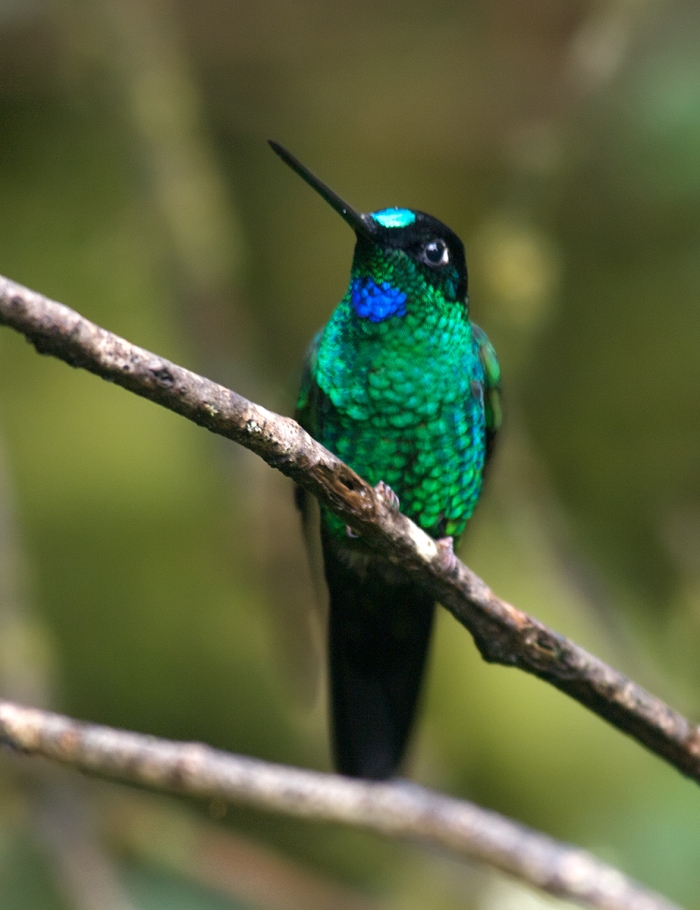Return of Bird of the Week: Buff-winged Starfrontlet

Male Buff-winged Starfrontlet, West Andes cloud forest, Ecuador
At about 5.5 inches long, this species’ name is nearly as big as the bird itself. A resident of the cloud forests of Columbia, Ecuador and northern Peru, you can see where the buff-winged part of the name comes from. When the bird turns, in the right light, you can see why it’s a starfrontlet.

Male Buff-winged Starfrontlet, West Andes cloud forest, Ecuador
The thing to understand about photographing hummingbirds without flash in the cloud forest is that the light is very low. And hummingbirds rarely hold still. These photos were taken in 2009, with WC’s then state-of-the-art Olympus E-3 DSLR. Its performance in low light left a lot to be desired; these photos were all taken at near-maximum aperture, at the highest ISO that produced decent photos, and the shutter speed still fell to 1/80th of a second. So, yeah, motion blur.

Female Buff-winged Starfrontlet, West Andes cloud forest, Ecuador
The female lacks the bright forehead and chest of the male, settling for a buffy throat to match the buffy wing bars. But still a very pretty bird. And, yes, motion blur.
This is a highly territorial, noisy hummingbird. When you encounter them in the cloud forest, they are generally chasing rivals, making a thin, wiry chatter with rattles. They also make a surprising loud, characteristic nasal “unk” repeated at intervals, often while feeding on nectar. WC has seen them at hummingbird feeders, but they don’t seem to favor them.
This species, like so many neotropical hummingbirds, is not well studied. As Birds of the World puts it, “Biology and ecology of species very poorly known; research required.” It is not believed to globally threatened but, truthfully, no one knows.
For more bird photographs, please visit Frozen Feather Images.